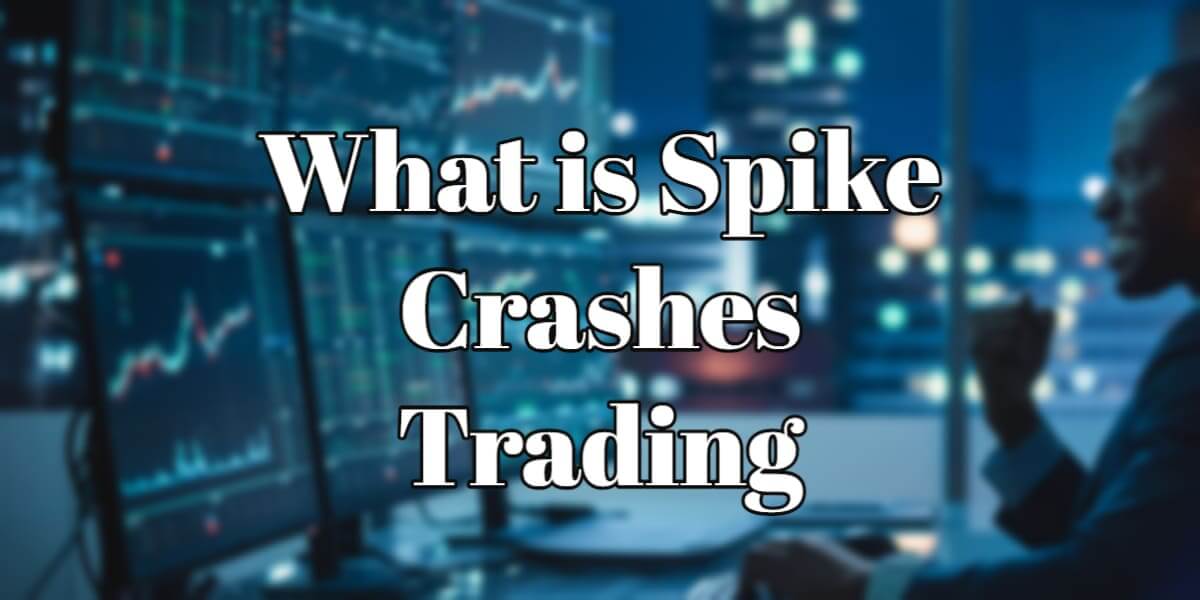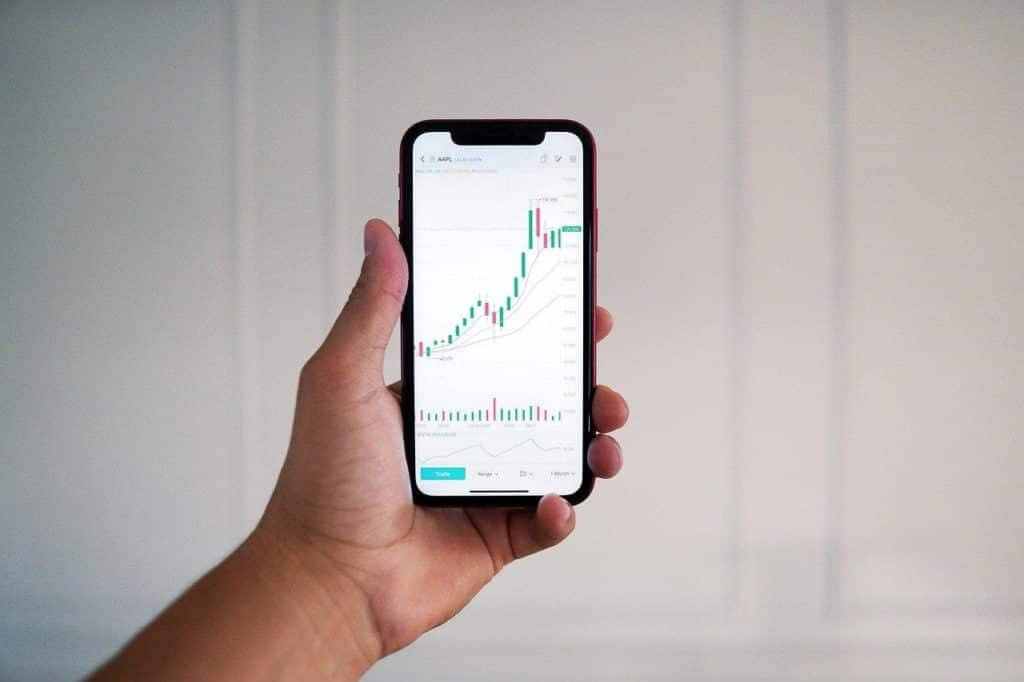What is Spike Crashes Trading – Get All The Information

What is Spike Crashes Trading – Get All The Information
During your dedicated trading career, have you ever wondered what Spike crashes trading is? Why has this type of trading become so popular with traders of all ages and preferences in the last few months?
Regardless of your level of expertise in trading and past successes, upgrading your knowledge in this industry is more than desirable if you have long-term goals to be successful. It is not easy to survive in a dynamic and volatile market, especially when there is huge competition.
Therefore, it is not surprising that there is a need to learn the various types of trading and available strategies that can improve one’s results. Spike crash trading will be very helpful for you to know and master to generate profits in the long run successfully.
So, before we know all the essential information about the Spike crashes trading, let’s find out what the Spike represents in the first place, shall we?
Get to know what Spike represents

A spike, in the Spike crashes trading, refers to the approximately large downward or upward movement of a particular price temporarily. It is a sudden move in one price asset that could be down or up. However, it happens more frequently once it represents up-moves.
In less common situations, a spike could represent a trade confirmation slip. That slip provides us with the information of all the pertinent data for a single trade that could be one of the following:
- Stock symbol
- Type
- Price
- Trading account info.
An example of a negative spike
There’s an example of a negative spike from 1987. In the financial market that year happened, the not-so-popular stock market crashed. It was the year in which DJIA, i.e., The Dow Jones Industrial Average, managed to plunge 23% in just 24 hours. Opposite to a crash, traders occasionally use a price spike upward.
When do spikes happen?
Usually, spikes do occur once some fresh information enters the financial market all of a sudden. It could be either an SEC investigation or an earnings surprise.
Professional tech analysts use the occurrence of a spike to assist them in making good decisions for their trading, i.e., in situations when the Spike is followed by rising or falling volume.
The concept of a spike in a stock price

There’s a famous concept of a spike in stock prices. It’s utilized in tech stock analysis. Trading a spike price is when tech analysts observe the long-term trend in a particular stock price. They take advantage of a particular trend to sell the stock.
Spike as a trend confirmation
Before knowing all about Spike crashes trading best strategy, remember that Spike is also referred to as a specific trend confirmation. It represents a written record of one security transaction.
The SEC is responsible for observing how investment information is revealed to investors. Every time a trader trades security, they provide a trade confirmation. A description of the bond or stock is what that trade confirmation includes. It also includes the exchange in which a transaction happens.
A broker is responsible for providing the number of traded units and confirming them. These units could be either the par amount of purchased or sold bonds with security symbols or the usual shares of stock.
What are the main characteristics of a spike?
It’s crucial to know that the main characteristics of a spike are the following:
- A rapid price rebound
- A huge price gap
- Any news event does not trigger it
- There weren’t any quick movements before the Spike occurred.
Also, remember that a spike is a quote that considerably strays from the market price. The reasons for non-market spikes usually are:
- That one transaction enters the entire system by mistake.
- Technical failure.
Boom and Crash – what you need to know

As we’ve seen above, spikes in trading represent a relatively large downward or upward movement of a price in a short period. When thinking about spike crash trading, it’s crucial to understand what spike trading strategies are worth mentioning.
According to numerous experts in the financial field, it’s crucial to know what the number one trading strategy is regarding Spike’s crashes, trading, and Boom Crash.
What are Boom and Crash exactly?
Boom and Crash indices are synthetic indices that include a spike. One is able to be profitable on normal or trading spike trading. They are popular for their immediate spikes, where drops and hikes are able to happen quickly, being as huge as 50+ pips.
The boom phase happens once the Spike results in an immediate price increase, while the crash phase is once prices decrease rapidly. At the end of a spike, positions are able to close, resulting in huge losses very easily and quickly.
The number one indicator for Boom and crash is that a trader has identified himself from observation and practice. It’s advised for newbies too:
- Set up a demo account
- Utilize the demo account for finding and practicing multiple strategies, using different indicators to find the best one for them.
Let’s know what financial experts think to be the number one pick strategy for Boom and Crash, shall we?
The number one strategy for Boom and Crash in Spike crashes trading.
The number one strategy for Boom and Crash could be described in the following way:
- For Boom, it begins by selling down. Once it’s sold down, the spikes happen. It will attempt to sell once again. Then spikes will happen right away. Or it could take much more time. It’s all influenced by the market’s direction.
- For Crash, it begins by purchasing up, and suddenly the spikes will happen. It will attempt to purchase again, and a spike will happen immediately or later. It also depends on the market movement.
We can see that Boom is in contrast to the Crash. However, what causes spikes to occur in the famous Boom and Crash?
What triggers spikes to happen in Boom and Crash?

Analytical traders may wonder what triggers spikes in the Boom and Crash market. Understanding the natural cause of spikes will enable traders to make a worthy spike strategy for Boom and Crash that will be more than helpful for them to be successful in the market.
First, it’s crucial to understand that there’s a statement on every index on MetaTrader 5. These are:
- One drop happens in the price series every 1000 ticks on average for Crash 1000.
- One Spike happens in the price series, each 1000 tick on average for Boom 1000.
- One drop happens in the price series every 500 ticks on average for Crash 500.
- One Spike happens in the price series every 500 ticks on average for Boom 500.
What does a tick represent?
A tick designates the slightest possible price movement in the market to the right of the decimal. Each augmentation in the digit of a price is a tick. For example, in the situation when the price transforms from 2.1034 to 2.1044 is what the tick represents.
With this acknowledgment, a trader can easily spot that, while counting one tick for C1000, a drop will occur before the 1000 tick is reached. The same situation applies to other indices. With that discovery, traders can easily make their Spike crashes trading strategy for boom and crash.
Finance experts advise beginner traders to focus on the Spike, mostly once the trend is right. It is considered to be among the most successful risk management strategies so far.
How do spot spikes on Boom and Crash Indices?

If you were wondering how to spot Boom and Crash indices on Boom and Crash successfully, there are several ways of doing so. According to one financial expert, you’re able to detect a spike by using the RSI number and observing the oversold and overbought zone on the RSI.
For instance, if the RSI number on M1 is relatively near 99, a trader is able to place a sell trade. It’s expected to do so since the Spike will happen before reaching 100. A trader should place a buy trade if the M1 RSI number is near 1.00.
That Spike will occur before the RSI number reaches 0.00. According to one professional trader, this particular strategy turned out to be 80% successful.
The second way of spotting spikes
The second way of spotting spikes on Boom and Crash indices is to concentrate on Price action and understand support and resistance, i.e., the “Major zone.” Then, placing buy or sell limits on these areas is crucial.
Remember, set a buy/sell limit and take profit plus 5 USD stop loss for every limit. You will be pleasantly surprised once you’ve noticed how the success rate will turn out. According to that same trader, with this strategy, he only lost two trades of nearly 120.
What are the best Boom and Crash strategies?
So far, experienced traders can try some of the best Boom and Crash strategies, which are:
- Price action strategy
- No-risk demo account strategy
- Risk management strategy.
How to successfully trade Boom and Crash?
If you were wondering how to successfully trade Boom and Crash, remember that its trading relies solely on technical analysis and price action. Unlike other forex pairs influenced by current events, news, or other policy changes, it’s unlike other forex pairs.
In general, the boom and crash index is entirely independent of two following things:
- Commodity markets
- Currency.
Remember that although synthetic indices markets act as traditional monetary markets, it’s artificial, i.e., simulated. The acting of the indices is developed from numbers that are randomly generated.
The post What is Spike Crashes Trading – Get All The Information appeared first on FinanceBrokerage.
0 Response to "What is Spike Crashes Trading – Get All The Information "
Post a Comment